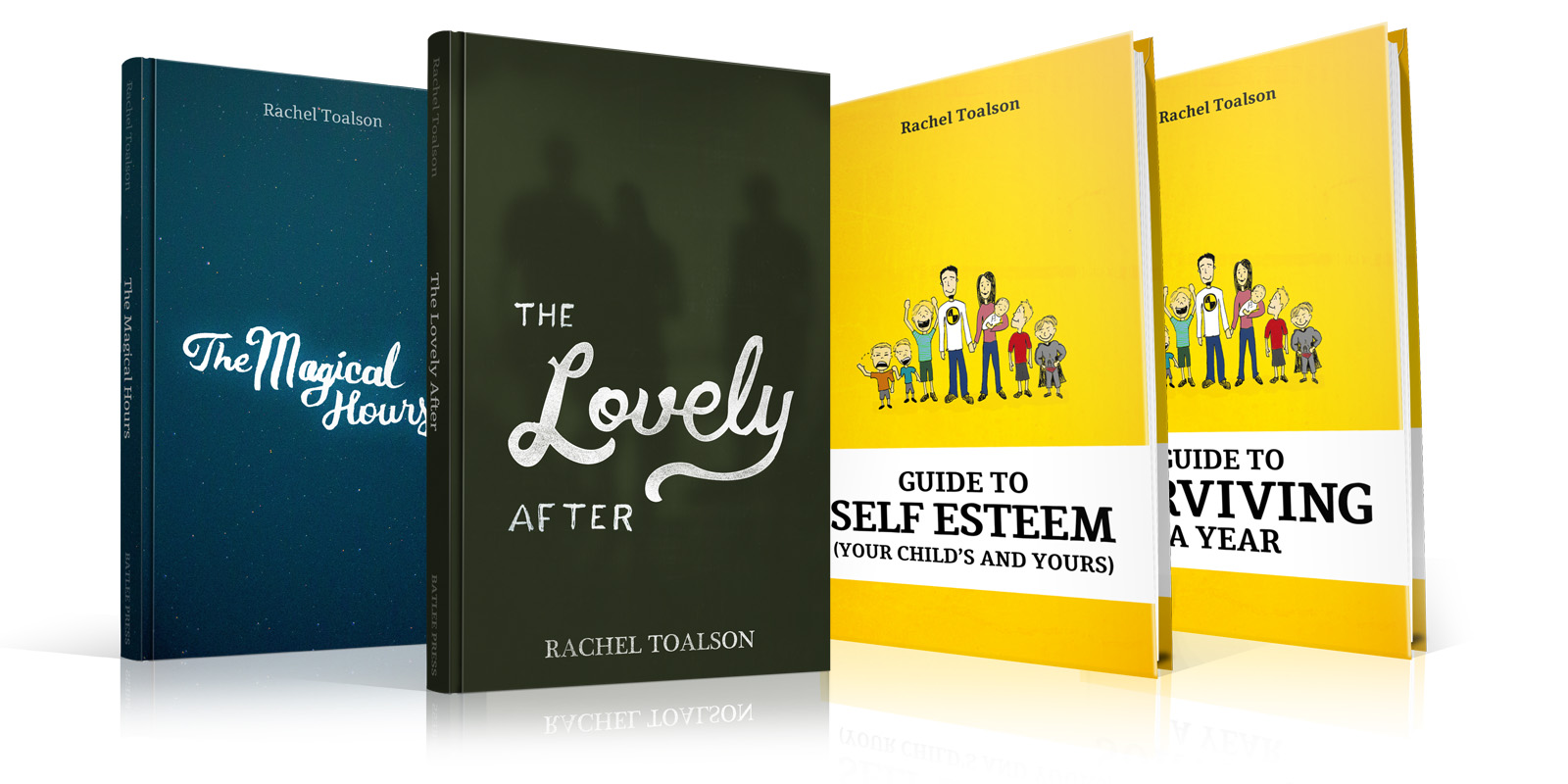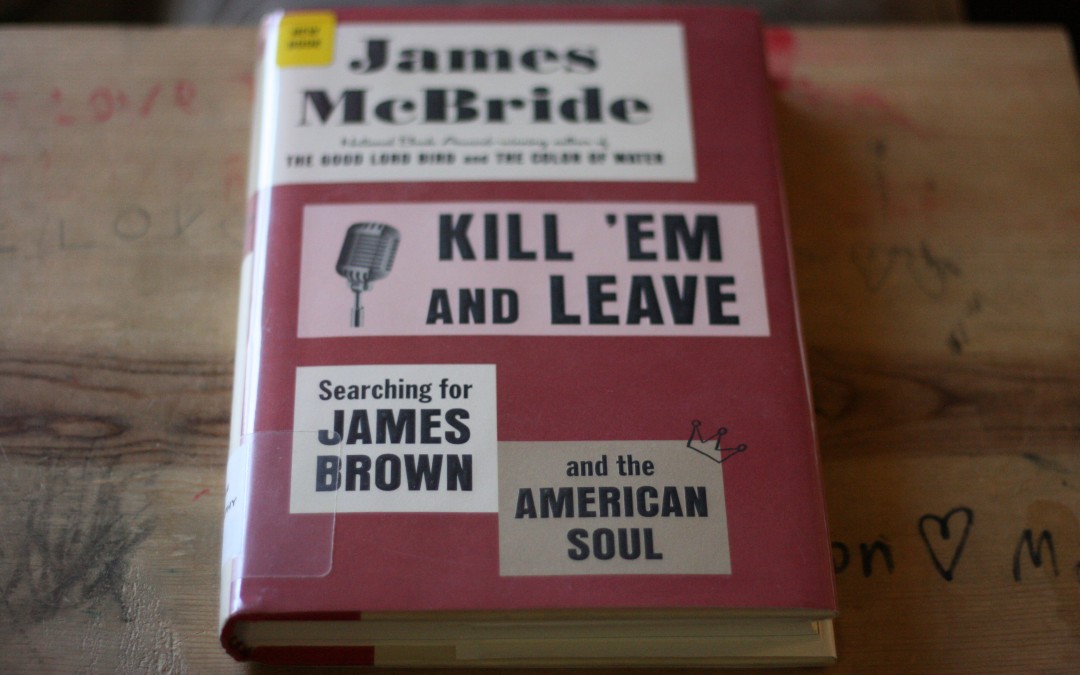
by Rachel Toalson | Books
Kill ‘Em and Leave: Searching for James Brown and the American Soul, by James McBride, is probably the best narrative nonfiction book I’ve read all year. I have to start by saying that I’m a huge fan of James McBride and have almost read everything he’s written. This book was interesting, humorous, truthful, smart and probing. It not only examined James Brown’s often-fabled life and the truth behind what we’ve heard to date, but it also examined the relations between blacks and whites in an honest, graceful, curious way.
Take this quote, for example:
“Such is the complexity of race relations in America’s South, where race keeps you in a kind of grid in which you never know where to step. Blacks and whites together—but not together. Living as one, but not as one. Living as family, but a dysfunctional family.”
McBride nails it. I live in the south. I know this is true.
These sorts of asides serve to make McBride’s readers trust him, and trust him they will as they make their way through the story of James Brown and a fortune that was intended to benefit poor children but never actually made it there. The book is more than just the history of James Brown. It’s the history of black music, the history of funk and soul, the history of life in the south. So many stories about James Brown have been told since the musician’s death, but none of them has been told as beautifully and as honestly as this one. McBride conducted interviews with people who had remained quiet until he got hold of them. He’s a journalist, and he gets all the way to the truth of Brown’s life and legacy. And the whole journey is fascinating.
McBride is a black musician himself, so he’d slip in asides about the state of professional musicians—like this one:
“Here’s how music history in America works: a trumpet player blows a solo in a Philly nightclub in 1945. Somebody slaps it on a record, and fifty years later that same solo is a final in a college jam department, and your kid pays $60,000 a year to take the final, while the guy who blew the solo out of his guts in the first place is deader than yesterday’s rice and beans, his family is suffering from the same social illness that created his great solo, and nobody gave two hoots about the guy when he died and nobody gives two hoots about his family now. They call that capitalism, the Way of the World, Showbiz, You Gotta Suck it Up, an upcoming Movie about Diversity, and my favorite term, Cultural History. I call it fear, and it has lived in the heart of every black American musician for the last hundred years.”
In the course of the book, McBride talks to people like Brown’s first wife, his manager, his musicians, people who knew the real James Brown. He uncovers the legal contest over Brown’s estate—a fight that has prevented any of the money Brown left for poor children in Georgia and South Carolina to actually reach them.
I first picked up a book by James McBride when his novel, The Good Lord Bird, won the National Book Award for Fiction in 2013. It’s a southern tale, just like Kill ‘Em and Leave. I knew then that I’d have to read whatever James McBride put out into the world. McBride is a master at bringing his readers into a story, whether he’s telling a fiction one or a familiar nonfiction one. He has a way with words that breathes life into the simplest of phrases and stories.
I’ve made it my mission to be like James McBride when I grow up.
I’ll leave you with one last quote from Kill ‘Em and Leave. These are the opening sentences and prove how McBride uses language to expertly draw his readers into a world they will not want to leave:
“The statue sits smack in the middle of downtown Augusta, Georgia, face high, because the old man never wanted to be standing above anybody else. He wanted to be down with the people. And as you stand before it on this deserted stretch of cheap stores and old theaters on a hot August afternoon, you say to yourself, ‘This is what they don’t teach you in journalism school’: to walk through the carcass of a ruined, destroyed life—this broken life and the one behind it, and the ones behind that—to navigate the maze of savage lawyers who lined up to feed at the carcass; to listen to the stories of the broke musicians who traveled the world in glory only to come home with a pocket full of nothing; to make sense of the so-called music experts who helped themselves to a guy’s guts and history trying to make a dollar change pockets. Everybody’s got a hustle in this world. Meanwhile the guy who made the show—he’s deader than yesterday’s beer, his legacy scattered everywhere but where he wanted it.”
I hope you’ve enjoyed this book recommendation. Be sure to visit my recommendation page if you’re interested in seeing some of my best book recommendations. If you have any books you recently read that you think I’d enjoy, don’t hesitate to get in touch. And, if you’re looking for some new books to read, stop by my starter library, where you can get a handful of my books for free.
*The books mentioned above have affiliate links attached to them, which means I’ll get a small kick-back if you click on them and purchase. But I only recommend books I enjoy reading myself. Actually, I don’t even talk about books I didn’t enjoy. I’d rather forget I ever wasted time reading them.
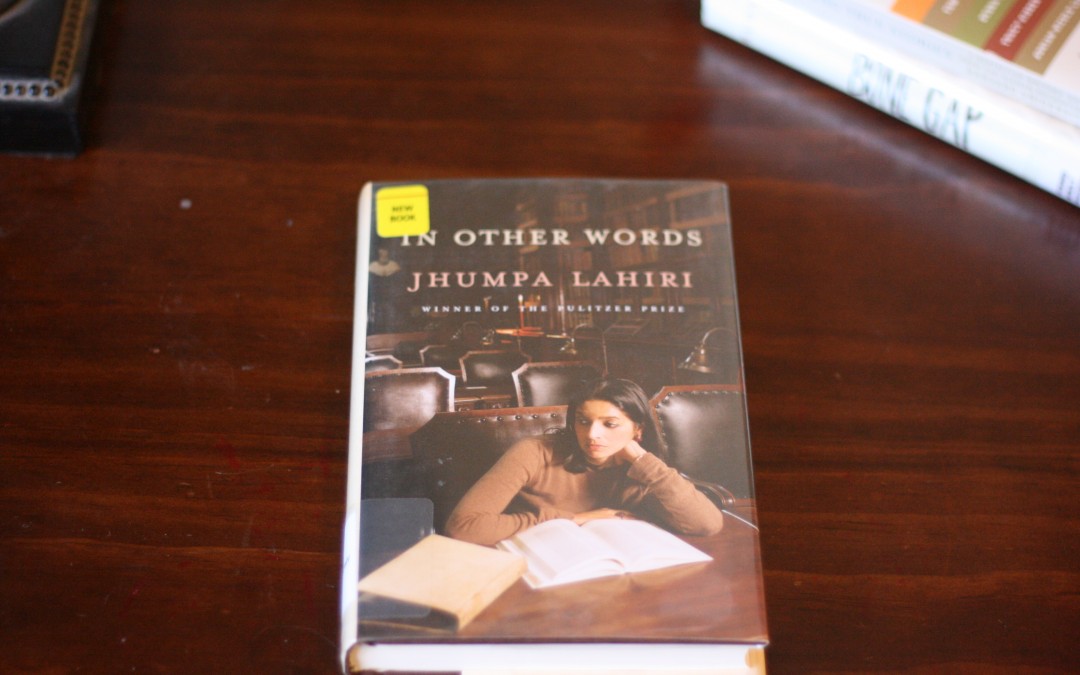
by Rachel Toalson | Books
I read a wide variety of books, if you haven’t quite picked that up yet. Today I want to tell you about two essay collections I really, really enjoyed.
The first was Jhumpa Lahiri’s In Other Words, which is a collection of essays that form the story of Lahiri’s journey into the Italian language. Her passion for the language and her drive to learn it moved her and her family to Rome for an immersion into the language. She begins the book by saying that she studied Italian after a trip to Florence in college. But she had never achieved mastery of the language. She’d never been able to let that go.
In Rome, Lahiri began to read and write—at first in her private journals, but later in short stories and essays—only in Italian. In Other Words is an autobiographical work that she wrote completely in Italian, so it is, at its heart, a story of one woman’s love and passion for a foreign language that culminated into a greater understanding of words.
But it’s not just Lahiri’s story about learning another language. It’s also a story about trying to find a place to fit in between cultures and selves. It is a masterful self-reflection on the art of reinvention.
Lahiri has a very poetic style, which made the essays flow smoothly and beautifully from one to another. Those who know Lahiri and her work will find this book different from her other books—but no less brilliant. She is one of my favorite short story writers, but now she has become one of my favorite essayists. The difference can be explained by her mastery of the Italian language. She wrote the book entirely in Italian and had someone else translate it into English—which gives the book a richer, deeper tone and voice and lyricism. Her writing is wise and truthful and lovely.
The second essay collection was not so much an essay collection as it was a diary. The Folded Clock, by Heidi Julavits was an intimate look into a regular woman’s year—or two. Julavits chronicled her daily life—but it wasn’t mundane or ridiculous. In fact, there were times that I laughed out loud and times that I got a little lump in my throat and times when I shook my head and said, “Yeah, me too.” Julavits talked about anxiety and women in writing and youth and aging and children and marriage. She wrote with intelligence, humor and, above all, deep honesty. She wrote about her struggles and about her silent thoughts and about her irrational worries that were so much like my own irrational worries. She framed the everyday with eloquent observations that spoke to the larger realm of life. It was charming and entertaining.
Some people might say that something as self-focused as a diary has no value at all. But Julavits proves this is not the case. She lays out her day-to-day activities but frames them within a larger context, and this is where the value in a diary is found. She doesn’t just report about what she did in the day, although each diary entry began with the same words, “Today I” but she takes her readers on a meandering path through her brain. What does it mean that she fought with her husband about his new diet? What does it mean that she does not like that particular coworker? What does it mean that she fears her daughter’s death when she hears an ambulance in her normally quiet neighborhood? And because she brings meaning to all of this, her readers not only connect with her everyday activities, but they connect to her musings.
My favorite parts of this book were the ones where Julavits talked honestly about the realities of parenting, but I also really enjoyed the courage it took to showcase fights with her husband and blunders she herself had made.
To demonstrate for you how Julavits took a situation and broadened its meaning, here’s an excerpt from the very beginning of the book:
“Today I wondered What is the worth of a day? Once, a day was long. It was bright and then it wasn’t, meals happened, and school happened, and sports practice, maybe, happened, and two days from this day there would be a test, or an English paper would be due, or there would be a party for which I’d been waiting, it would seem, for years. Days were ages. Love bloomed and died in a day. Rages flared and were forgotten and replaced by new rages, also forgotten. Within a day there were discernible hours, and clocks with hands that ticked out each new minute. I would think, Will this day never end? By nightfall, I’d feel like a war had been fought. I was wounded; sleep was not enough to heal me. Days would linger in my nerves, aftershocks registered on the electrical plain. Days made a physical impact. Days could hurt.”
I hope you enjoyed these book recommendations. Be sure to pick up a free book from my starter library and visit my recommends page to see some of my favorite books. If you have any books you recently read that you think I’d enjoy, contact me. I always enjoy adding to my list. Even if I never get through it all.
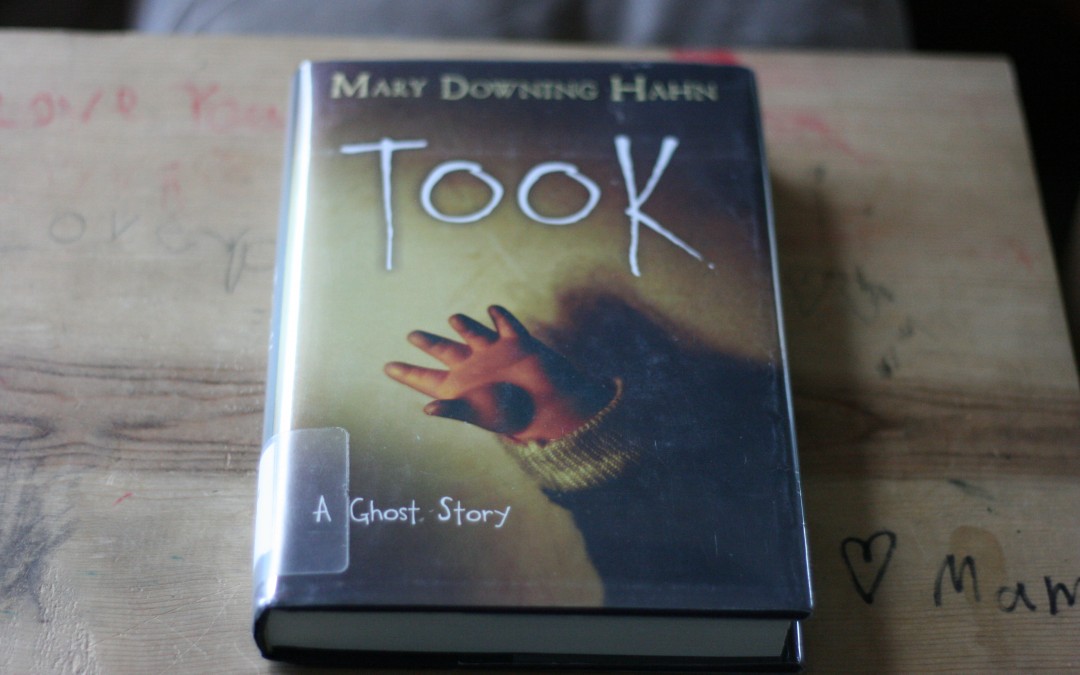
by Rachel Toalson | Books
Lately I’ve been obsessed with the author Mary Downing Hahn. I’ve said it before, but it’s worth mentioning again—when I find an author I love, I will read everything she (or he) writes. It’s part of my reader’s manifesto. This is the case with Mary Downing Hahn.
I first read Hahn when I was a pre-teen and the book Wait Til Helen Comes was featured in a Halloween display in my middle school library. I enjoyed scary books as a kid, and this book was everything I loved about reading and horror and horrific imagination. I haven’t re-read this book yet, but it’s on my list.
Hahn has a whole stack of other scary books she’s written over the years. I sort of lost sight of her once I became an adult, but recently one of my boys asked me to start reading one of her books to him. This led me to checking out every single book of hers from our local library.
The most recent ones that I’ve read include The Old Willis Place, Dead Man in Indian Creek, The Ghost of Crutchfield Hall and Took.
Three of these are actually in the kid-lit horror section, so I’ll talk about them first. The Old Willis Place is a story about two children, Diana and Georgie, who live in the woods around the Old Willis Place. A new caretaker comes around and they start to play tricks on him, like they do to every caretaker. But this time the caretaker has a daughter, and Diana really wants to be her friend, but she can’t break the sinister rules that keep her and Georgie tied to the woods.
The Ghost of Crutchfield Hall is about a 12-year-old orphan, Florence, who goes to live with her uncle in a creepy old house where her cousin, who was exactly her age, died. Her cousin haunts the house and is not a nice ghost.
Took was about a creepy old ghost that haunted the woods around the home that Daniel and Erica’s parents buy. When Erica disappears, Daniel has to brave those woods to save his sister. This was probably the scariest one of them all.
The Dead Man in Indian Creek was about a boy, Matt, and his best friend, Parker, who discover a dead body while out camping in the woods. They try to solve who did it. This one was creepy in a different way and had quite a bit of mature content because it dealt with drugs and violence, but it was still just as enjoyable as the others.
What I love about Hahn is that she seems to have such an authentic connection with the middle grade voice. Hahn understands children. Even in the middle of scary situations, her characters come to life as innocent children, mostly. They have authority, of course, but it’s an authority that’s constantly trying to work out who they are and what they should do. Her narrators don’t know everything. So that immediately creates a tension with the reader—will the narrator figure out what’s going on? Will she make the right choice in letting a hostile ghost go free? Will he be brave enough to face a dangerous monster in the woods?
Hahn has written quite a few stories in the same genre, but they don’t feel the same. The characters are very much different from one another. Matt, in The Dead Man in Indian Creek, was a little humorous and self-deprecating, as we can see in this passage, where he’s making fun of himself for being a bit overweight:
“Forgetting my resolve, I looked at him. ‘What’s the matter with you,’ I said. Angrily, I broke the stick I’d been whittling and tossed it into the bushes. If we were going to have a fight, okay, I was ready. Let him sock me, I’d sock him back, and then I’d sit on him, my ultimate advantage, right?”
One of the other characteristics of Hahn’s books that make them come alive for me are the creepy descriptions of houses and woods and rooms. I’ve talked before about how some of the scariest things I read or watch are the things that use understatement and let the imagination fill in all the details. Hahn is a master of letting her readers do this for themselves. Here’s her description of the Old Wills Place:
“The old Willis place everyone calls it, though its true name was Oak Hill Manor. The front lawn was a field of knee-high weeds and thistles the size of small trees. Paint peeled from the front door and wood trim. The steps and porch had rotted long ago. Shutters hung crooked from the boarded windows; some had fallen off and leaned against the house. Slates from the roof littered the yard. Two tall double chimneys tilted to the right, giving the place an unstable look, as if it might topple over at any moment in a tumble of bricks.”
You can just imagine that haunted house and all the horrors within it, can’t you?
I will be spending the rest of this year going through Hahn’s backlist, which is quite extensive. Most of her stories are scary ones, but some are historical or mysterious. I’m sure I’ll love every one.
Be sure to visit my recommendation page if you’re interested in seeing some of my best book recommendations. If you have any books you recently read that you think I’d enjoy, don’t hesitate to get in touch. And, if you’re looking for some new books to read, stop by my starter library, where you can get a handful of my books for free.
*The books mentioned above have affiliate links attached to them, which means I’ll get a small kick-back if you click on them and purchase. But I only recommend books I enjoy reading myself. Actually, I don’t even talk about books I didn’t enjoy. I’d rather forget I ever wasted time reading them.
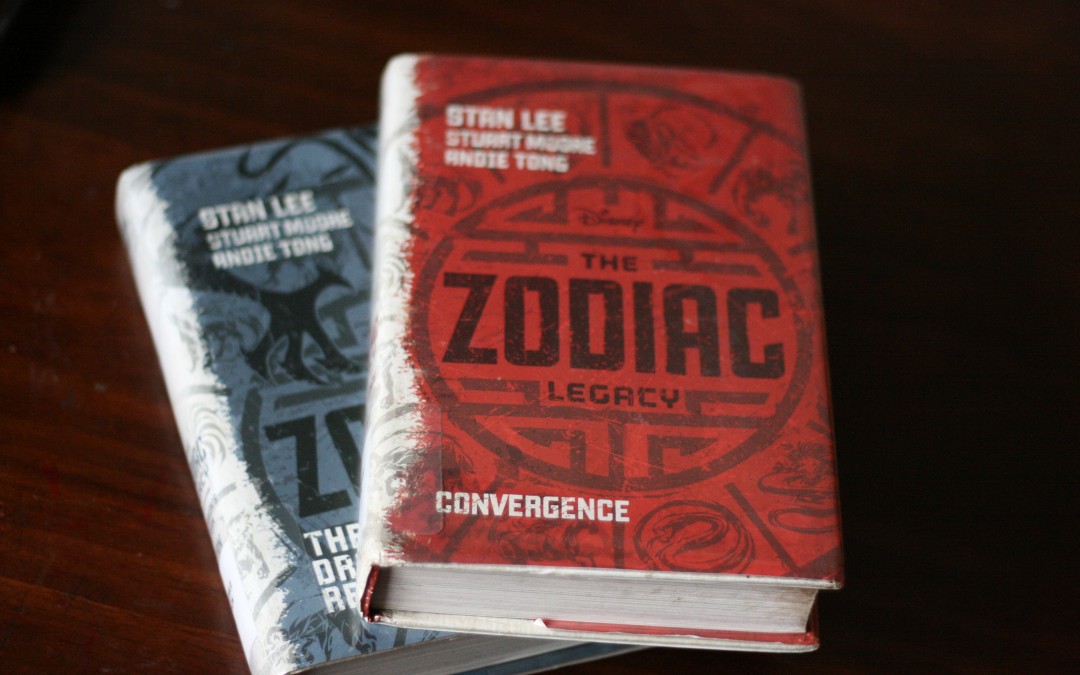
by Rachel Toalson | Books
Recently I read two kid-lit fantasy books that made me want to watch movies.
I have to qualify this statement a little bit. It’s not that these books were so awesomely written that you would want to watch a movie that was made from them. I only mean that one of them was written by a famous comic book artist and the other was commissioned by Disney and is already turned into a television show.
The first book is Convergence, which is the first book of the Zodiac Legacy, written by Stan Lee and Stuart Moore and illustrated by Andie Tong. Stan Lee is the creator of superheroes like Spider-Man, the Hulk, Iron Man and the X-Men. So this book was full of his typical creativity.
Convergence centered around the story of a kid, Steven Lee, who follows some screams in the middle of a tour in China while visiting a museum, which is probably always a bad idea. In Steven’s case it introduced him to Maxwell, who is trying to steal all the zodiac powers so that he can rule the world. Instead, he accidentally gifts Steven with the Tiger power. Whoops.
So begins a war between Maxwell and his Zodiacs and Steven and the “good” Zodiacs. They are both trying to track down the other people who acquire zodiac powers.
One of the best features of this book was the illustrated pages—which had a comic book sort of feel and kept the pages turning faster. The story was written well enough—it wasn’t awesome, but it was really the imagination that went into creating this story that impressed me the most. I love the comic book world and superheroes and the way those types of stories get boys reading. I’m always a fan of getting boys reading. We’ll work on the literary stuff later, once we show them that stories are awesome.
After reading Convergence, though, I really wanted to go watch all the old superhero movies I’ve grown to love over the years. There’s something about the big screen that makes superheroes come alive. Convergence has a sequel, The Dragon’s Return, which I have not yet read.
The second book was The Isle of the Lost, by Melissa de la Cruz. I originally picked this book up because it was on the display shelf at my local library, and it looked interesting. It’s the first book in a relatively new series, The Descendants. The Isle of the Lost was the story of the children of popular fairy tale villains—like a second-generation fairy tale. It was published and commissioned by Disney, so Cruz was able to use all the names of the villains that we’ve seen in Disney fairy tales over the years. Characters included Maleficent’s daughter, Mal; the Evil Queen’s daughter, Evie; Jafar’s son, Jay; and Cruella de Ville’s son, Carlos. They are all banished from the kingdom of Auradon to the Isle of the Lost, where there is no magic or, really, anything good.
But back in Auradon, there is unrest, and on the isle, there are hints that magic just might be coming back to the isle—which means the villains might have another say so.
While this wasn’t a mind-blowing book, what I think kids will enjoy most about it is seeing familiar people in a new way. The villains are all grown up—and now their descendants are taking on the world their parents created for them. That’s one of the parts I liked most about it, too. There’s something special about feeling like you already know the characters but seeing them in a whole new way. I have not watched the television show, but I think this story, too, would come alive on the screen. And, like Convergence, The Isle of the Lost made me want to go re-watch some of the old fairy tales and Disney productions.
De la Cruz released the second book in this series, Return to the Isle of the Lost, in May.
I hope you enjoyed these book recommendations. Be sure to pick up a free book from my starter library and visit my recommends page to see some of my favorite books. If you have any books you recently read that you think I’d enjoy, contact me. I always enjoy adding to my list. Even if I never get through it all.
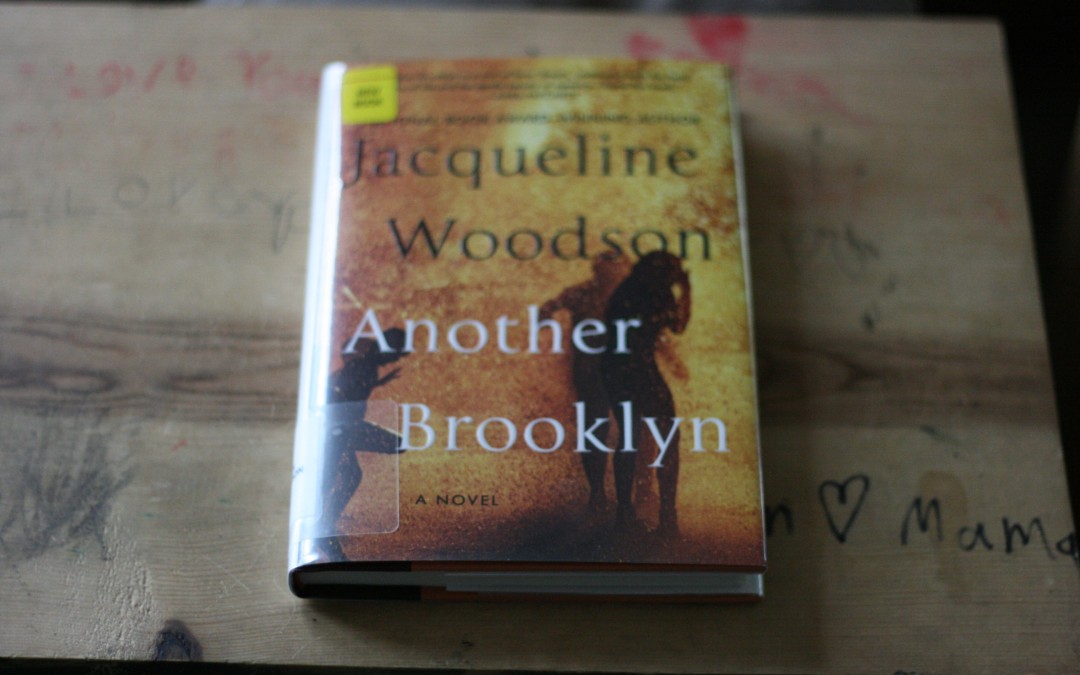
by Rachel Toalson | Books
Another Brooklyn is a brand new release from Jacqueline Woodson, who is best known for her middle grade novels Brown Girl Dreaming, Feathers, and Locomotion, all of which have been award-winning books. She’s also written many others that are recognized in the kid-lit world. Another Brooklyn was long listed for the National Book Award. Woodson is serious about creating spectacular books.
This story is about a girl named August, who runs into an old childhood friend and is suddenly thrown into a sea of memories from when she was a girl on the brink of becoming a woman. She had three best friends—Sylvia, Angela and Gigi. They shared everything. They survived the streets of Brooklyn because they took on the city and their futures together.
This book was achingly heartbreaking because it examined that strange time between adult and child, when your innocence and childlike hopes meet the realities of the world. Anything could happen in that place—and it did in this book. Girls were damaged in their homes. Mothers disappeared. The madness of the world came for them.
Another Brooklyn seemed almost memoir-like, and had the appearance of a time-lapse video, where you watch time go by and people grow older. It was a commentary on hard life and poverty. It was also a poetic masterpiece, which is something I’ve come to expect from Woodson.
Not only that, but Woodson is a master at creating likable characters. It does not take a reader long to care about the characters Woodson creates on the page, who are all mostly poor and female. I found myself relating to them in ways I would not have expected, though I have never lived in Brooklyn and I am a white woman. But poverty is a common language, so I recognized myself in her characters.
I really liked the issues that this book explored. There was the issue of poverty, there was the issue of being black in Brooklyn, there was the issue of simply being a female in Brooklyn, and there was the issue of being a black female in Brooklyn. There was the passage of time and how it changes us. There were the unexpected turns of life that show us what we’re made of. Everything that this book explored was so much more than its slim pages would suggest. It was a short book, but it was a very deep one, too.
Here’s one of my favorite quotes from Another Brooklyn. Sylvia’s father has just asked August what she wants to do when she grows up:
“But listening to Sylvia’s father, I felt myself straightening my back, tilting my chin up. Law, I wanted to say, like you. I want truth, I wanted to say. An absolute truth, or if not truth, reason—a reason for everything. But the hems of my bellbottoms were tattered. My socks in this shoeless house had holes in the heels. In the winter, because of my own absentmindedness, my hands and arms were often ashy. How could I even think of aspiring to anything when this was how I walked thorough the world? Sylvia’s mother’s flick of an eye said to us again and again, Don’t dream. Dreams are not for people like you.”
I read My Name is Lucy Barton a few weeks ago, because one of my all-time favorite adult fiction authors is Elizabeth Strout, who is the author of this book and who also wrote Olive Kitteridge, a fantastic collection of short stories forming a cohesive story that won the Pulitzer Prize for Fiction in 2009. My Name is Lucy Barton is Strout’s newest release, which published earlier this year.
The book is about a woman, Lucy Barton, who is in the hospital with a sickness that remains vague throughout the story. The type of sickness doesn’t really matter to the story—only inquisitive minds like mine. During her hospital stay, Lucy’s mother comes to visit. She hasn’t seen her mother in years. They talk—-gossip, really—-about all that has happened to the people they knew when Lucy was younger. They talk about everything except for Lucy’s childhood, which was quite traumatic.
The reader learns of this childhood in asides, but Lucy can never bring it up to her mother, even though she’s a grown woman and it’s clear that the past is what keeps Lucy and her mother from truly bonding.
What was so heartbreaking about this story is that you could feel the emotional distance, and, at the same time, the longing that Lucy had to close that distance. She wanted to talk to her mother about what had happened when she was a child, but, out of love and respect for her mother, she never did. It was a tragic missed opportunity, but Lucy felt it was a kind of protection for her mother.
Probably my favorite thing about this book was that it felt almost like a memoir (much like Woodson’s book)—-Lucy Barton was looking back at a difficult life and writing her way into hope in spite of the circumstances. The last line of the book was “All life amazes me,” and it was clear throughout the story that all of life actually did amaze Lucy Barton. She had no anger toward her parents for giving her such an unstable childhood. She never stopped loving them.
My Name is Lucy Barton was a brilliant work of art, a commentary on life and family and the troubling pasts that serve to shape us into who we are because of how we choose to rise above them. Though it was short, it was incredibly profound. I don’t think I’ll be forgetting Lucy Barton for a long, long time.
Be sure to visit my recommendation page if you’re interested in seeing some of my best book recommendations. If you have any books you recently read that you think I’d enjoy, don’t hesitate to get in touch. And, if you’re looking for some new books to read, stop by my starter library, where you can get a handful of my books for free.
*The books mentioned above have affiliate links attached to them, which means I’ll get a small kick-back if you click on them and purchase. But I only recommend books I enjoy reading myself. Actually, I don’t even talk about books I didn’t enjoy. I’d rather forget I ever wasted time reading them.
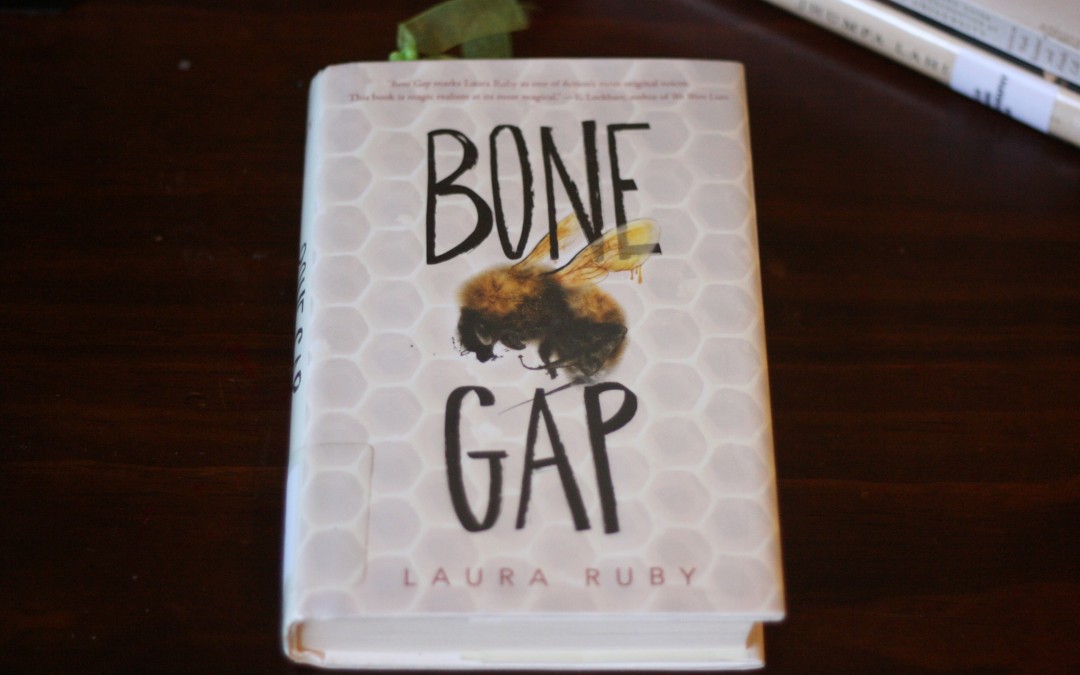
by Rachel Toalson | Books
I read Bone Gap, by Laura Ruby, several months ago, but, for some reason, I wasn’t quite ready to talk about it. I think it’s because this book takes a lot of digesting. It’s got so many layers that you need some time with it once you finish it.
Bone Gap is the story of Roza, a girl who is mysteriously taken by an unidentified man. Finn, the only one who saw her disappear, can’t get over the guilt of not being able to identify the man who took her. What makes it worse is that his older brother, who is basically his guardian, was in love with Roza.
As you can see, from this short description alone, Bone Gap was full of everything that makes a book worth reading—romance, tension, horror, and even a bit of science fiction. I think what I probably loved most about it is that while it had a small-town feel about it, which reminded me of my own teenage years growing up across the street from cornfields (they play a large part in the book), it also felt large and important. The emotion of it was raw and heartbreaking and tender.
There’s a lot of young adult fiction out there that is surface-level fiction, but Ruby wove a story that was much deeper than the surface. A narrative actually happened beneath the surface, in a whole other realm. In spite of the outward plot, it was a story about two brothers trying to find their way through the wreckage of a mother leaving them. It was about a girl coming to terms with the fact that she was beautiful. It was about another girl circling around to the final belief that being beautiful was okay.
There is so much to say about this story, but I feel like I’d be gushing. Let me just share a quote with you from Ruby’s poetic prose. This is her opening, probably one of the best young adult openings I’ve ever read.
“The people of Bone Gap called Finn a lot of things, but none of them was his name. When he was little, they called him Spaceman. Sidetrack. Moonfaced. You. As he got older, they called him Pretty Boy. Loner. Brother. Dude.
“But whatever they called him, they called him fondly. Despite his odd expressions, his strange distraction, and that annoying way he had of creeping up on a person, they knew him as well as they knew anyone. As well as they knew themselves. They knew him like they knew that Old Charlie Valentine preferred his chickens to his great-grandchildren, and sometimes let them roost in the house. (The chickens, not the children.) The way they knew that the Cordero family had a ghost that liked to rifle through the fridge at night. The way they knew that Priscilla Willis, the beekeeper’s homely daughter, had a sting worse than any bee. The way they knew that Bone Gap had gaps just wide enough for people to slip through, or slip away, leaving only their stories behind.”
I only just finished Six of Crows, by Leigh Bardugo. This is an amazing book. It’s the story of six renegades in the city of Ketterdam who attempt a heist unlike anything their world has ever seen.
It took me a while to get into the book, because it’s a fantasy world that is really intricate. There were lots of new characters with strange names and lots of terms that took a while to get accustomed to. But once I got further into it I could not put Six of Crows down. It had the feel of a teenage Oceans 11, set in a fictional world. I didn’t expect to love it, but I did. And now I can’t stop thinking about it.
What I liked most about Six of Crows is that it was so incredibly complete. When you walked into the fantasy world, there were no questions left unanswered. Bardugo wove the world right around me. I could see it all. I could smell it. I could hear it. It was an imaginary world with impossible things, but it felt real. That’s when you know you’ve found a great fantasy writer.
I also enjoyed that the romance in this book was understated. I’ve read a lot of dystopian young adult science fiction and epic fantasy books, and a whole lot of them do romance wrong—at least wrong in my opinion. They’re full of exhaling breaths and falling into arms that are muscled and strong, and feeling a warm rush in the pit of their stomach as love blooms inside. Bardugo, though, expertly hinted at the romance between characters and showed it more through looks and experiences rather than warm gushy feelings in the pits of stomachs. I found myself aching for characters who hadn’t explicitly shown they were longing for one of the other characters. It was refreshing.
The only thing I might have done differently to this book was cut the prologue. I actually didn’t even remember the prologue until my husband started reading the book and said, “That first chapter was interesting.” I racked my brain to figure out what the first chapter was. Those characters didn’t come back into play again, so it seems like the story could have done without it.
If I were going to describe Six of Crows with one word, it would be smart. The story was impressively smart. The fight scenes, the characters, the actual heist itself—it was all smart. Thrilling, even. Bardugo’s sequel, Crooked Kingdom, released Sept. 27, and I can’t wait to start reading.
I hope you enjoyed these book recommendations. Be sure to pick up a free book from my starter library and visit my recommends page to see some of my favorite books. If you have any books you recently read that you think I’d enjoy, contact me. I always enjoy adding to my list. Even if I never get through it all.







